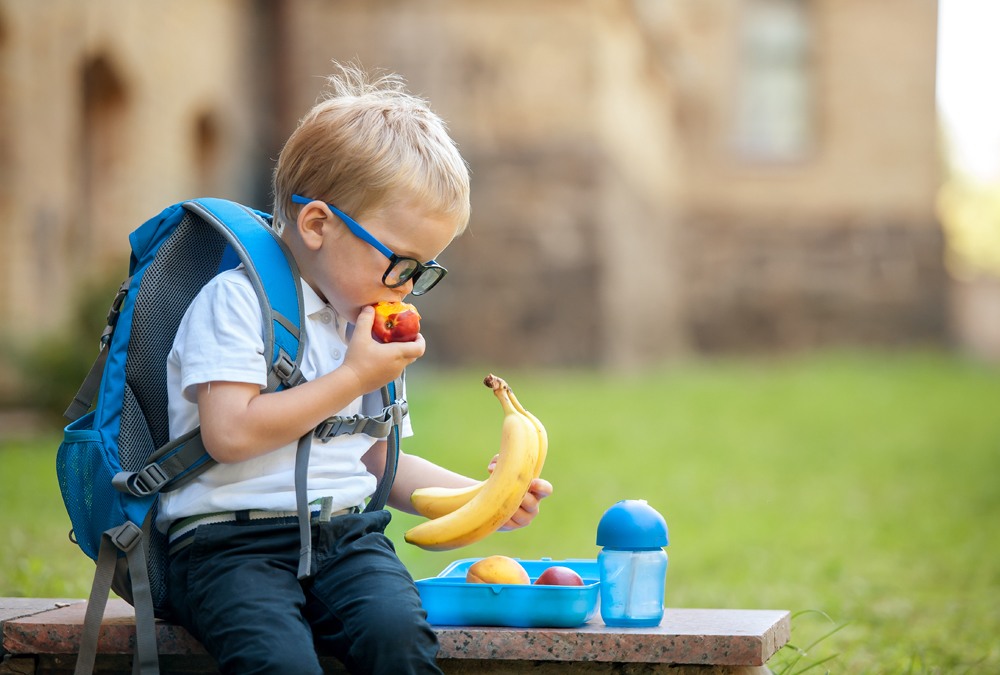Mon - Fri 9.00 - 17.00
Call us +1 (888) 825-9321

The start of a new school year is a great time to reconsider old habits, particularly unhealthy ones, and that’s especially true when it comes to nutrition for kids. After all, the lessons we teach our children about food and health will stick with them for their whole lives. This is a great way to start a healthy habit!
With studies showing that empty calories from fats and added sugars account for 40% of children’s daily calories, there’s never been a better time to start thinking about nutrition. Make sure your little ones have the fuel and vitamins they need to stay healthy and focused all day long with these back-to-school nutritional tips for kids.

Think all those platitudes about breakfast being the most important meal of the day are nonsense? You might want to think again. Studies show that individuals who miss breakfast in the morning tend to consume fewer calories throughout the day, but have body mass indexes (BMI) that are higher than those who take the time to eat this all-important meal. Further, kids who eat breakfast do better on exams and have an easier time with problem solving and concentration. Searching for some breakfast ideas that are both healthy and simple to make? Opt for an open-faced egg sandwich on half an English muffin, a breakfast parfait with yogurt, fruit, and granola, or even just some steel-cut oatmeal with blueberries.
Just because the school bells have rung for the year doesn’t mean temperatures have dropped. With the fall semester starting as early as August, there’s a good chance your kids will be heading to and from the bus stop while the weather is still hot. To keep them healthy and hydrated, send them to school with a reusable water bottle they can fill at the fountain. Little one not a fan of plain-old tap water? Consider adding some fresh-squeezed lemon, lime, or even orange to improve the flavor.
Kids’ brains are constantly soaking up information. One of the best ways to keep your youngster focused on the task at hand is by providing adequate nourishment. Fresh fish and fish oil help fuel both the body and the mind. Not only do these healthy fats aid in concentration and energy, but they also support metabolism, immune system function, and even mood. Omega-3 fatty acids, found in foods like salmon and avocado, are particularly valuable for supporting brain health and development.
If you have one or more school-age kids, you naturally want to keep things simple at lunchtime. However, sandwiches are often packed with processed meats and carbs that offer little nutritional value. Fortunately, there are some easy, affordable lunch options that won’t leave you stuck in the kitchen for hours.
You can serve up rice paper wrappers or lettuce leaves filled with your youngster’s favorite protein, be it pork, shrimp, or tofu. Add a stick of cheddar cheese and some cut-up fruit for a lunch that’s tasty and delicious. Or you can opt to prep a simple hummus plate. Pack a plastic container of homemade or store-bought hummus with pita and fresh veggies for dipping. Other healthy lunch staples include quinoa salad, cheese quesadillas, hard-boiled eggs, and yogurt with fruit and nuts. For best results, include a fun dessert like fresh berries or a couple pieces of dark chocolate. Be sure to choose meal options your child enjoys. After all, you don’t want your little one trading with a friend because she doesn’t like what you packed.
Of course, it’s not enough to get your child to eat healthy at school. If your little one gets home and heads right for the Oreos, all your hard work to this point will have been for naught. Instead, offer your kids healthy snacks they can feel good about enjoying. A good rule of thumb when snacking is to eat something that includes a protein, a grain, and a fruit or veggie.
So, your kids could snack on homemade or store-bought peanut butter with a sliced apple and handful of wheat crackers. Or maybe they’d prefer a slice of whole grain toast with banana and almond butter on top. Other healthful snack components include homemade banana muffins, crackers and cheese, yogurt, trail mix, cottage cheese, and avocado toast.
One of the best ways to get kids to embrace a healthy eating routine is to make the food preparation process fun. Add interest and whimsy to meals by making them colorful. For example, a bowl of oatmeal is a lot more enticing when topped with an assortment of strawberries, blackberries, and blueberries. Similarly, those buckwheat pancakes are healthier and more attractive when dished up with a serving of sliced peaches. And that plate of scrambled eggs looks and tastes great when you add diced red peppers and a little green onion. Not only will these brightly hued fruits and veggies make all your meals look more appealing, but they’ll also provide kids with the antioxidants and fiber they need to stay healthy throughout the day.
Have a little one who resists eating his veggies? Whip up some more playful options like the classic ants on a log (celery, peanut butter, and raisins) or serve fresh veggies on a kabob.
You can also increase the odds of your children eating healthy by involving them in the meal preparation process. Make lunch packing a family activity and invite your little ones to decide whether they’d rather have a sliced apple or handful of carrot sticks. The more you involve them, the more likely they are to make nutrition a priority moving forward.
Good blog
Hi Deepali! Thank you.